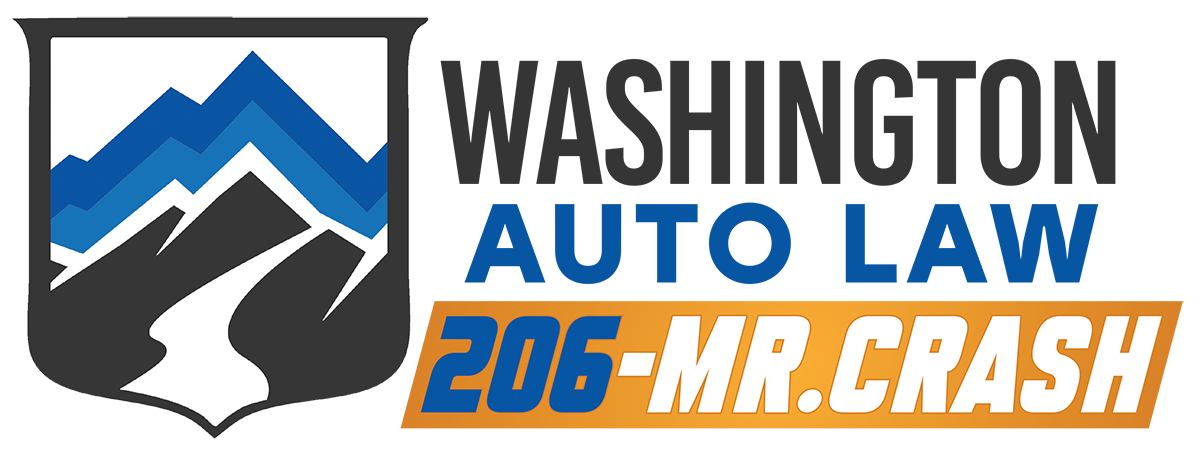Table of Contents
- Understanding Distracted Driving in Washington
- Key Evidence to Prove Distracted Driving
- Steps to Take After an Accident
- Why Proving Distracted Driving Matters
- How a Personal Injury Law Attorney Can Help
- Contact Washington Auto Law for Help
Distracted driving is a leading cause of accidents in Washington, posing serious risks to drivers, passengers, and pedestrians alike. If you’ve been injured in a car accident caused by a distracted driver, proving their negligence is crucial for securing compensation. Understanding the evidence needed and the steps to take can improve your chances of a successful claim.
Understanding Distracted Driving in Washington
Washington state has strict laws in place to reduce distracted driving incidents. Under Washington’s Driving Under the Influence of Electronics (E-DUI) law:
- Drivers are prohibited from holding a phone while driving, even when stopped at a light or in traffic.
- Common distractions like texting, scrolling social media, or taking photos are all considered violations.
- Drivers can be cited for “dangerously distracted driving” if engaging in other distractions that compromise safety, even if no electronic device is involved.
Since this law was implemented, distracted driving deaths have decreased 40% — dropping from 155 fatalities in 2017 to 93 fatalities in 2020. However, distractions like holding a device while driving are still alarmingly common, accounting for 41.5% of distracted driving incidents in 2023.
Key Evidence to Prove Distracted Driving
To demonstrate that the other driver was distracted at the time of the accident, gathering strong evidence is essential. Key forms of evidence include:
1. Eyewitness Testimony
Eyewitnesses can provide valuable insights if they observed the driver texting, eating, or otherwise distracted before the crash. Witness statements can add credibility to your claim and support other forms of evidence.
2. Police Reports
When law enforcement arrives at the scene, they often document signs of distracted driving. Police may include observations such as:
- A phone in the driver’s hand
- Open food containers or makeup kits in the vehicle
- Statements from the driver admitting they were distracted
- Request a copy of the police report to strengthen your case.
3. Cell Phone Records
Obtaining the other driver’s phone records can reveal if they were texting, calling, or browsing at the time of the crash. These records often provide timestamps that align with the accident’s timeline.
4. Surveillance and Traffic Camera Footage
Nearby security cameras or intersection cameras may have captured the driver engaging in distracting behavior. This visual evidence can be crucial in proving your case.
5. Vehicle Data and Dashcams
Many modern vehicles are equipped with data recorders that capture driving behavior such as braking patterns and speed. Additionally, dashcam footage — either from your vehicle or another driver’s — can provide clear visual proof.
6. Social Media Posts and Online Activity
If the driver posted photos, videos, or status updates around the time of the accident, this digital footprint can serve as evidence of distracted behavior.
Steps to Take After an Accident
If you suspect the other driver was distracted, follow these steps to build a strong claim:
- Call 911: Reporting the accident ensures law enforcement will document the scene and assess for signs of distracted driving.
- Gather Evidence: Take photos of the accident scene, vehicle damage, and any visible signs of distraction (e.g., phone on the driver’s seat).
- Collect Witness Contact Information: Eyewitnesses may play a critical role in proving the other driver was distracted.
- Seek Medical Attention: Even if you feel fine, some injuries may appear later. Medical records also support your injury claim.
- Consult with an Attorney: An experienced attorney can help gather evidence like cell phone records and surveillance footage.
Why Proving Distracted Driving Matters
Successfully proving that the other driver was distracted is key to securing compensation for:
- Medical expenses (current and future)
- Lost wages due to time off work
- Vehicle repairs or replacement
- Pain and suffering caused by the accident
In Washington, distracted driving is considered negligent behavior. Demonstrating this negligence can significantly strengthen your personal injury claim and improve your chances of receiving fair compensation.
How a Personal Injury Law Attorney Can Help
Navigating the legal process can be overwhelming, especially while recovering from an accident. A knowledgeable personal injury attorney can:
- Investigate the accident thoroughly
- Obtain crucial evidence like phone records and camera footage
- Communicate with insurance companies on your behalf
- Ensure you meet Washington’s statute of limitations for filing a claim
Contact Washington Auto Law for Help
If you’ve been injured in an accident caused by a distracted driver, don’t face the legal process alone. Contact Washington Auto Law today for a free consultation. Our experienced attorneys are dedicated to helping you gather evidence, prove negligence, and secure the compensation you deserve.
Call us today at 206-497-4357 or schedule a consultation to discuss your case and learn how we can support you during this challenging time.
